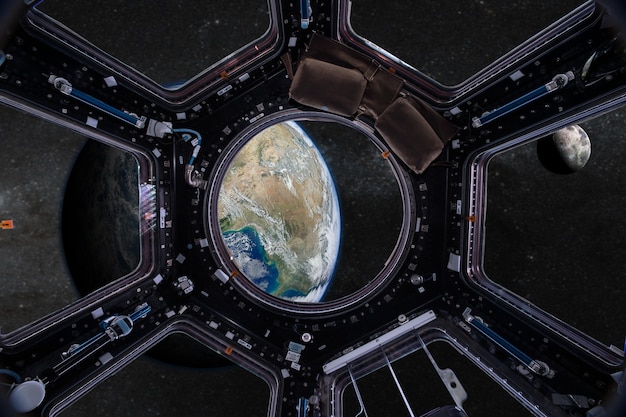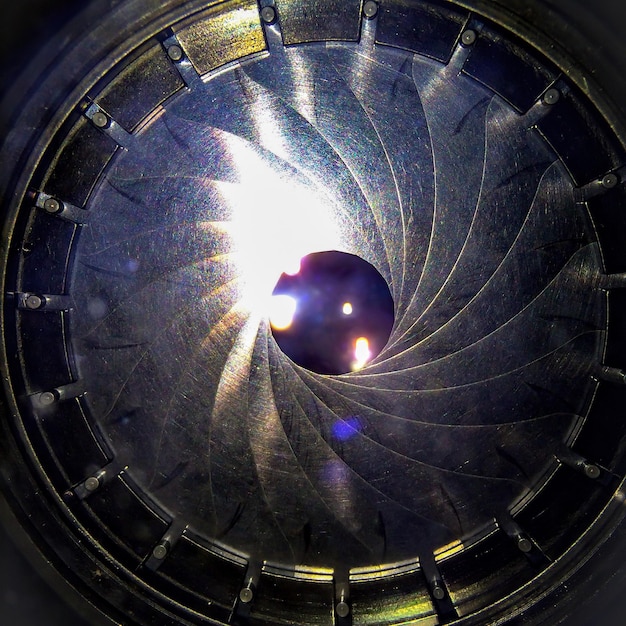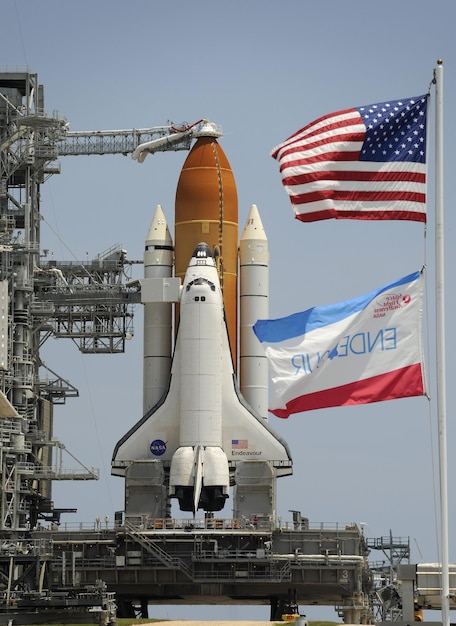US Space Program: Latest Missions, Discoveries & Future Explorations

The US Space Program continues to evolve with groundbreaking missions and discoveries, pushing the boundaries of space exploration and expanding our understanding of the universe.
The US Space Program Update: Exploring the Latest Missions and Discoveries reveals a constantly evolving landscape driven by innovation and a relentless pursuit of knowledge.
The Artemis Program: A Return to the Moon
The Artemis Program represents a monumental step in space exploration. This ambitious initiative aims to send astronauts back to the Moon, marking the first crewed lunar landing since the Apollo missions.
Goals of the Artemis Program
The primary goal of the Artemis Program is to establish a sustainable presence on the Moon. This involves not only landing astronauts on the lunar surface but also developing the infrastructure needed to support long-term missions.
- Lunar Exploration: Conduct extensive research and exploration of the Moon’s surface and resources.
- Technology Development: Test new technologies and capabilities necessary for future missions to Mars.
- International Collaboration: Foster collaboration with international partners to achieve shared goals in space exploration.
The Artemis Program also seeks to promote inclusivity, with plans to land the first woman and person of color on the Moon. This reflects a commitment to diversity and representation in space exploration.
The Artemis Program is a crucial step in preparing for future missions to Mars. By testing technologies and gaining experience on the Moon, NASA and its partners aim to reduce the risks and challenges of deep-space exploration.
Recent Missions and Discoveries
The US Space Program has been involved in numerous missions and discoveries that have significantly advanced our understanding of the universe. These missions span a wide range of scientific disciplines and technological innovations.

James Webb Space Telescope
The James Webb Space Telescope (JWST) is one of the most remarkable achievements in space technology. Its advanced capabilities allow scientists to observe the universe with unprecedented clarity.
JWST has made several groundbreaking discoveries, including:
- Early Galaxies: Identifying some of the earliest galaxies formed after the Big Bang.
- Exoplanet Atmospheres: Analyzing the atmospheres of exoplanets to determine their composition and potential habitability.
- Star Formation: Observing the birth of stars in nebulae with remarkable detail.
The telescope’s ability to capture infrared light has enabled it to see through cosmic dust, revealing objects and phenomena that were previously hidden from view. This has revolutionized our understanding of the early universe.
The insights gained from JWST are shaping our understanding of the origins of galaxies, stars, and planetary systems. Its discoveries are guiding future research and exploration efforts.
Advancements in Space Technology
The US Space Program is at the forefront of innovation, continually developing new technologies to support missions and enhance our capabilities in space.
These advancements include:
- New Propulsion Systems: Developing more efficient and powerful propulsion systems for spacecraft.
- Advanced Materials: Creating lightweight and durable materials that can withstand the harsh conditions of space.
- Robotics and Automation: Implementing robotics and automation technologies to assist astronauts and perform tasks in space.
One notable advancement is the development of reusable rockets, which has significantly reduced the cost of space launches. Companies like SpaceX have played a key role in this area.

These technological advancements are not only benefiting space exploration but also have applications in various industries on Earth. The innovations developed for space often lead to breakthroughs in fields such as medicine, communications, and materials science.
International Space Station (ISS)
The International Space Station (ISS) remains a vital hub for research and collaboration in space. It serves as a platform for conducting experiments in microgravity and studying the effects of long-duration spaceflight on the human body.
Research on the ISS
Scientists from around the world use the ISS to conduct research in various fields, including:
- Biology and Medicine: Studying the effects of microgravity on cells, tissues, and organ systems.
- Materials Science: Developing new materials and manufacturing techniques in space.
- Earth Observation: Monitoring Earth’s climate, environment, and natural disasters from space.
The ISS also provides a unique perspective for observing astronomical phenomena. Scientists can use the station’s vantage point to study distant galaxies, stars, and planets.
The ISS is a testament to international cooperation, bringing together astronauts and researchers from many different countries to achieve common goals in space.
Private Sector Involvement
The role of the private sector in space exploration has grown significantly in recent years. Companies like SpaceX, Blue Origin, and Virgin Galactic are making substantial contributions to the US Space Program.
Contributions from Private Companies
Private companies are involved in various aspects of space exploration, including:
- Launch Services: Providing launch services for satellites and crewed missions.
- Space Tourism: Developing space tourism opportunities for private citizens.
- Technology Development: Creating new technologies for space exploration, such as reusable rockets and advanced spacecraft.
The increased involvement of the private sector has led to greater innovation and efficiency in space exploration. Private companies are often able to develop and deploy new technologies more quickly and cost-effectively than government agencies.
The partnership between NASA and private companies is fostering a dynamic and competitive space industry, driving progress faster than ever before.
Future Missions and Plans
The US Space Program has ambitious plans for the future, including missions to Mars, exploring asteroids, and continuing to push the boundaries of space exploration.
Future Goals and Projects
Some of the key goals and projects for the future include:
- Mars Missions: Sending crewed missions to Mars to explore the planet and search for signs of life.
- Asteroid Exploration: Studying asteroids to learn more about the early solar system and potentially mine them for resources.
- Space Habitats: Developing space habitats that can support long-duration missions and permanent settlements in space.
These future missions require significant investment and technological innovation. The US Space Program is working to develop the technologies and capabilities needed to achieve these ambitious goals.
The future of space exploration is bright, with the potential to unlock new scientific discoveries, expand human presence in space, and inspire future generations of scientists and explorers.
| Key Point | Brief Description |
|---|---|
| 🚀 Artemis Program | Returning astronauts to the Moon and establishing a sustainable lunar presence. |
| 🔭 James Webb Telescope | Observing the early universe and exoplanet atmospheres with unprecedented clarity. |
| 🛰️ International Space Station | Conducting research in microgravity and fostering international cooperation in space. |
| 🧑🚀 Mars Missions | Planning crewed missions to Mars to explore the planet and search for signs of life. |
Frequently Asked Questions
▼
The main goal is to return astronauts to the Moon and establish a sustainable presence for long-term exploration and research.
▼
Its advanced infrared capabilities allow it to observe the universe with unprecedented clarity, seeing through cosmic dust to reveal hidden objects.
▼
Research includes studying the effects of microgravity on biology, developing new materials, and observing Earth’s climate and environment.
▼
Companies like SpaceX provide launch services, develop new technologies, and even offer space tourism opportunities.
▼
Future plans include sending crewed missions to Mars, exploring asteroids for resources, and developing space habitats for long-duration missions.
Conclusion
The US Space Program Update: Exploring the Latest Missions and Discoveries showcased the ongoing advancements and future plans, highlighting the importance of continued exploration for scientific discovery and technological advancement. From the Artemis Program’s lunar ambitions to the James Webb Telescope’s groundbreaking observations, the US remains at the forefront of space exploration, inspiring future generations and pushing the boundaries of what’s possible.





